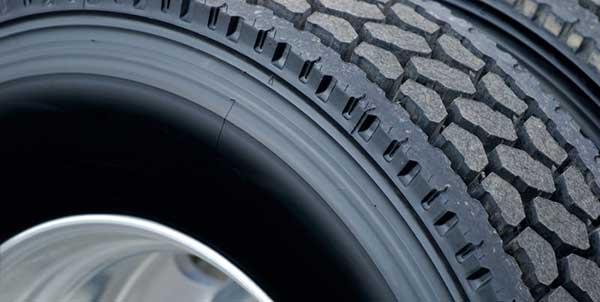For every 10% of under-inflation in the tires on a vehicle, a 1% reduction in fuel economy will occur, said Matthew Hanchana, senior manager of the sales technical department for Giti Tire. That may seem small, but when you multiply by tire positions, trucks in your fleet and miles run per year, the cost adds up.
Rick Phillips, vice president of sales for Triangle Tire USA, said that checking air pressure should be a two-step process. First, fleet managers should ensure that the tire’s air pressure matches the load it will carry.
“There are a lot of fleets that simply put 100 PSI in every tire and in more cases than not, that’s not the correct pressure,” Phillips said. “On a typical 18-wheel tractor-trailer carrying 80,000 lbs., most steer tires need 105 to 110 PSI and most drive and trailer tires only need around 85 to 90 PSI. At 100 PSI, the steer tires are under-inflated and drive and trailer tires are over-inflated.”
Over-inflation can result in irregular wear as well. An under-inflated tire, however, will flex more than it should, which could lead to damage to the casing, called casing fatigue, Phillips said. During casing fatigue, the steel cords in the sidewall of the tire become hot and eventually break, which could lead to tire failure.
The second step in the inflation process is to make sure that it’s maintained. Without the proper amount of air in the chamber to maintain the tire’s profile, it will never perform as it was intended and the fleet will risk additional financial impact.
Mike Graber, Toyo Tire’s senior manager for product planning and technical services, recommended checking air pressure in the morning when tires are cold, since pressure will increase as tires get warmer with use. Measuring while hot will give you an inconsistent reading.
“Set the cold pressure to the level found on the vehicle placard rather than the sidewall,” he said. “Operators should weigh their truck while loaded and set the pressures to the appropriate level to safely carry the load.”
Note that the proper inflation pressure could also be found in the vehicle owner’s manual, listed on the inside of a glove box or center armrest compartment or on the vehicle’s fuel door.
More tire maintenance tips
While air pressure is the most important factor in the care and keeping of truck tires, other maintenance checks should be performed to ensure proper tire care.
Tire rotation and vehicle alignment are two maintenance checks that are key to extending tread life.
Periodical rotation of tires can prevent or reduce irregular wear and extend the life of the tires while contributing to a smoother more fuel efficient performance, Giti’s Hanchana said.
If irregular tire wear is detected, a best practice is to rotate the tire, said Tom Clauer, manager of commercial and OTR product planning for Yokohama Tire Corp. The most common types of irregular tire wear include inner/outer rib wear (steer axle, toe setting), cupping or scalloping (all axles worn out) and heel-toe wear. Regular tire rotation maintenance can also help detect worn and inoperable parts. Some parts that often need replaced are shocks, kingpins, wheel bearings and other suspension parts.
“Look for anything that’s not normal. One-sided wear, punch wear, spot depression wear or irregular wear on the tread edges—these are all signs you have a problem,” Triangle’s Phillips said.
Alignment is associated with the entire aerodynamics of the trailer and can also impact fuel economy, Giti’s Hanchana said. A vehicle is aligned when its tires are traveling in the same direction and producing regular wear patterns. To detect if an alignment is needed on your trailer, check the tire wear.
Yokohama’s Clauer said if there is inside wear on one side of the vehicle and outside wear on the other side, then your trailer is in need of an alignment. A misalignment can lead to an increase of total drag on the vehicle.
Robert Palmer, Bridgestone Americas’ director of market sales engineering, also recommended fleets check how their vehicles are mounted. Improper mounting can lead to irregular wear and result in ride disturbance over time, he said.
In addition, fleets should clean wheels carefully and check for bent or dented flanges, rust build-up and dirt or damage that can make it difficult for the tire’s bead to seat properly. Palmer also recommended lubricating both the wheel and tire bead with a high-quality, vegetable-oil-based lubricant to make mounting loads easier.
Other preventive measures can be taken while driving. Fleets should advise drivers to be aware of their speed, braking and debris on the road.














